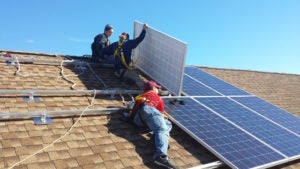Law speeding connection of solar goes into effect

 A new law is designed to get Maryland solar customers grid-connected more quickly. The bill was signed in May and has been in effect since the beginning of this month. It sets a performance standard for utilities to complete the final step of interconnection. Maryland utilities must complete the final step of interconnection within 20 business days for 90% of the applications received. This new law will addresses concerns of systemic slowness in the interconnection process in many parts of the state.
A new law is designed to get Maryland solar customers grid-connected more quickly. The bill was signed in May and has been in effect since the beginning of this month. It sets a performance standard for utilities to complete the final step of interconnection. Maryland utilities must complete the final step of interconnection within 20 business days for 90% of the applications received. This new law will addresses concerns of systemic slowness in the interconnection process in many parts of the state.
“Interconnection” is the process of connecting a solar array to a utility’s electricity system. There are two steps that happen with the utility. The first happens when a solar installer requests “permission to install” (or “PTI”) from the utility. This permission is required before the installer may begin their work to install solar on a residential property.
The second step happens after the work is completed and inspected by the local jurisdiction. The installer submits paperwork to the utility showing the work has been completed and inspected and requests “permission to operate” (or “PTO”) from the utility. At this stage, the utility reviews the application; replaces the electricity meter so it can record the flow of electricity in two directions (“net-metering”); and provides final approval for the system to begin operating. The homeowner may turn on their system and begin producing clean energy once this step is complete.
This firm timeline requirement allows the Public Service Commission to hold utilities accountable for their performance. Solar owners who are dissatisfied with their utility’s performance in interconnecting their system may still file a PSC complaint to register their concerns.
